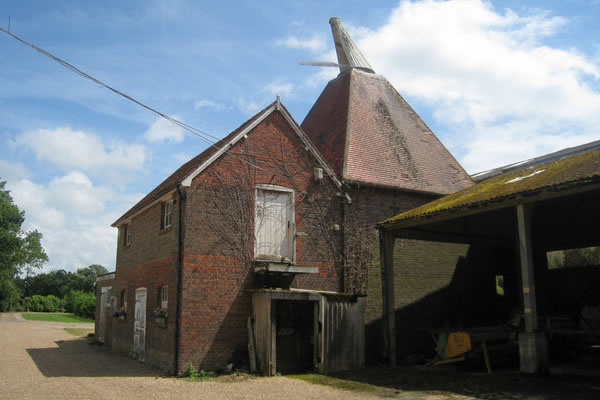Oast Houses
 Oast Houses
Oast Houses
An oast house is an example of vernacular architecture in England, especially Kent and Sussex
Horsmonden has many examples, some of them still in use, some derelict and the others converted into houses. They were originally built as farm buildings used for drying hops to prepare them for the brewing process. Consisting of three or four storeys, on which the hops were spread out to be dried by hot air from a wood or charcoal-fired kiln at the bottom. The drying floors were thin and perforated to permit the heat to pass through and it escaped through a cowl in the roof which turned with the wind. The freshly picked hops from the fields were raked in to dry and then raked out to cool before being bagged up and sent to the brewery.

The earliest surviving oast house is at Cranbrook which dates to circa 1750, but the process is documented from soon after hops were introduced into England in the early 16th century. Early oast houses were simply adapted barns but, by the early 19th century, the distinctive circular buildings with conical roofs had been developed in response to the increased demand for beer.
Square oasts appeared early in the twentieth century as they were found to be easier to build. In the 1930s, the cowls were replaced by louvred openings as electric fans and diesel oil ovens were employed.
Hops are today dried industrially and the many oast houses on farms have now been converted into desirable dwellings. One of the best preserved oast house complexes is at the Hop farm at Beltring near Paddock Wood which is now a visitor attraction.
